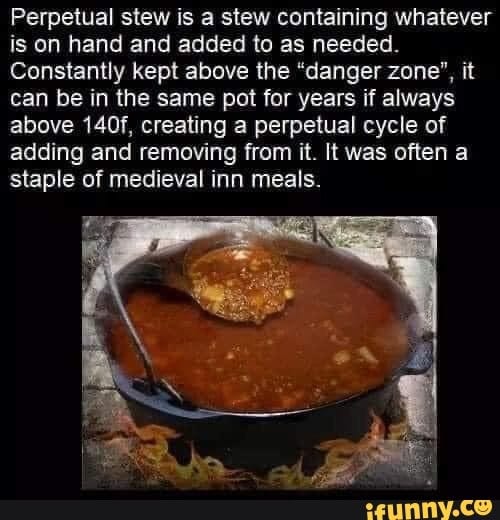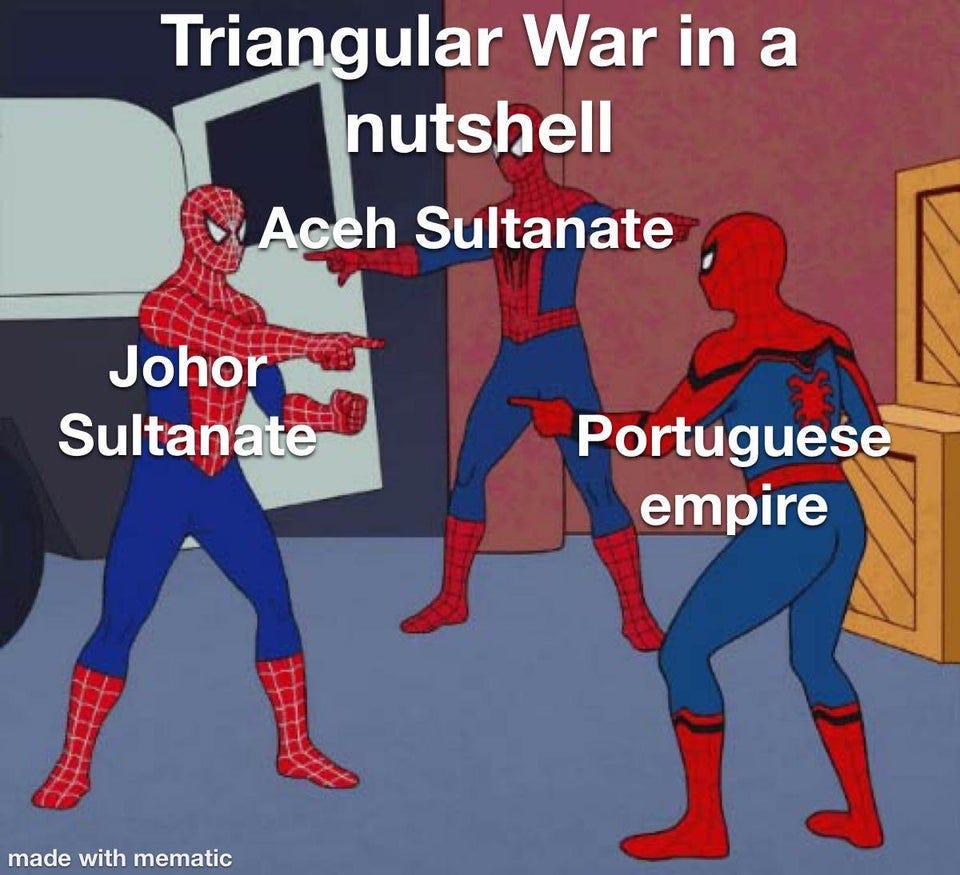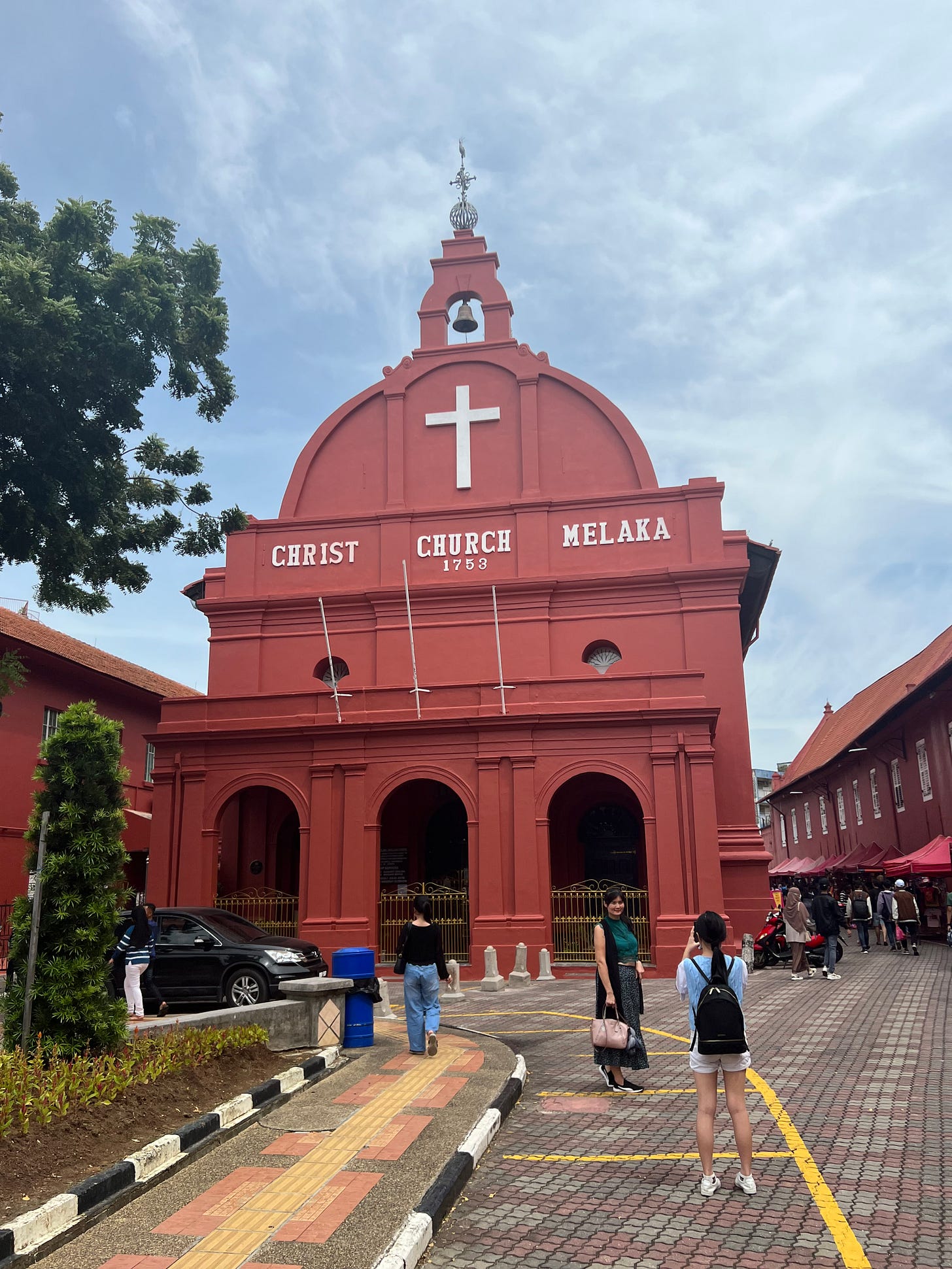Malacca Strait: why does up to 40% of global trade flow through here?
The Strait of Malacca's strategic importance persists to this day
It’s been a pleasure starting Eurasian VC on its journey this year. Thank you to everyone from across industries, academia and interests who has subscribed. Your continued engagement is simply invaluable.
It is a privilege to be a VC. Even more so, a VC that crosses continents and cultures.
Happy New Year everyone. May your wildest dreams come true in 2023.
TL;DR
Dominating logistics access. Access to the Malacca Strait facilitates up to 40% of global trade. It is the shortest sea route to get from Europe to the Far East
Dominating logistics access AND supply of precious commodities. Once upon a time, Malacca was the key to access both the Strait and the lucrative spice trade
Geopolitical melting pot. Malacca was contested by Europe and Asia for centuries
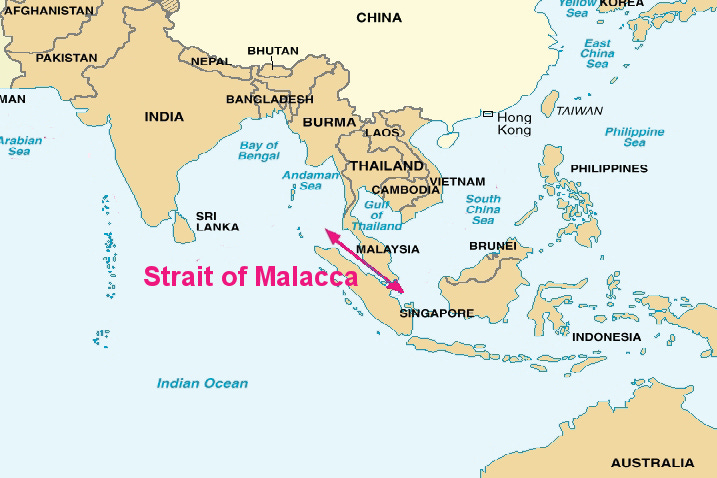
Of all places this Christmas, I found myself in Malacca.
I’d read it about many times before. For those of you who haven’t heard of Malacca, it’s a state in Malaysia on the way to Singapore.
It’s swampy, and agriculturally challenging. Life moves at a leisurely pace here.
I’d suggest you bring mosquito repellent if you ever visit. An umbrella too.
So it might be a surprise to some that it was once a centre of global trade.
This is because it is located along a shipping lane that provides the shortest route between Europe and the Far East.
The Strait of Malacca, as it is known, remains a region of utmost strategic and economic importance to this day.
Why is the Malacca Strait so important?
When up to 40% of global trade is said to flow through its waters, it’s not hard to see why. But that’s not it - read on!
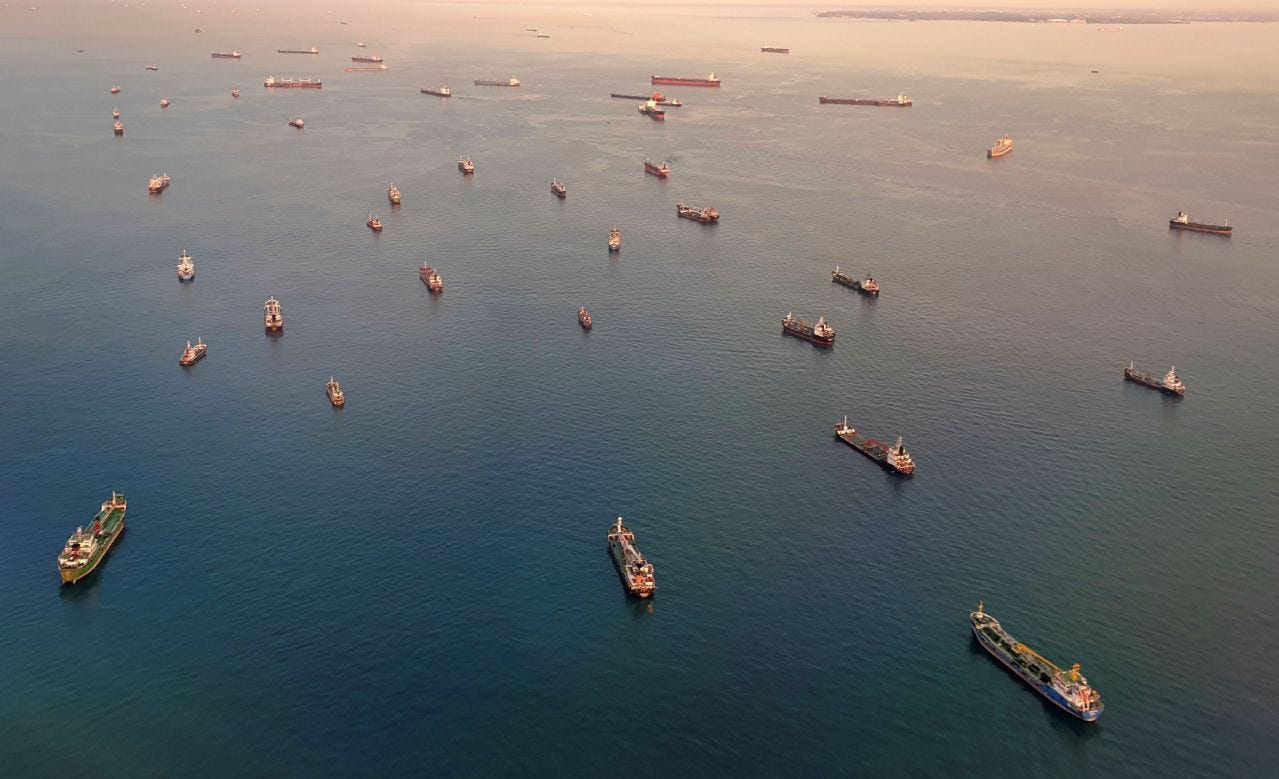
According to various reports1, every year the Strait of Malacca facilitates:
At least $1 trillion in global trade, possibly up to >$5 trillion
Around 1/3 of the total volume of world trade
2/3 of China’s trade volume by sea
40% of Japan’s sea trade
15 million barrels of oil per day and 1/3 of all LNG volumes to China and Japan
80% of China’s crude oil imports (in 2016)
Simply put, the Strait of Malacca is the shortest sea route between the Indian and Pacific Ocean. It is over 1/3 shorter than its closest alternative.
If you wanted to annoy (just a few) countries, turning off access to this region would be a royal way to piss them off!
900km long, at its narrowest point it is only a mere 1.7 miles wide. Yet over 200 ships pass through it each day. No wonder civilisations have fought over it for the best part of 1,000 years.
So let’s hear a bit about its colourful story through time. Boom.
The beginnings of a maritime empire
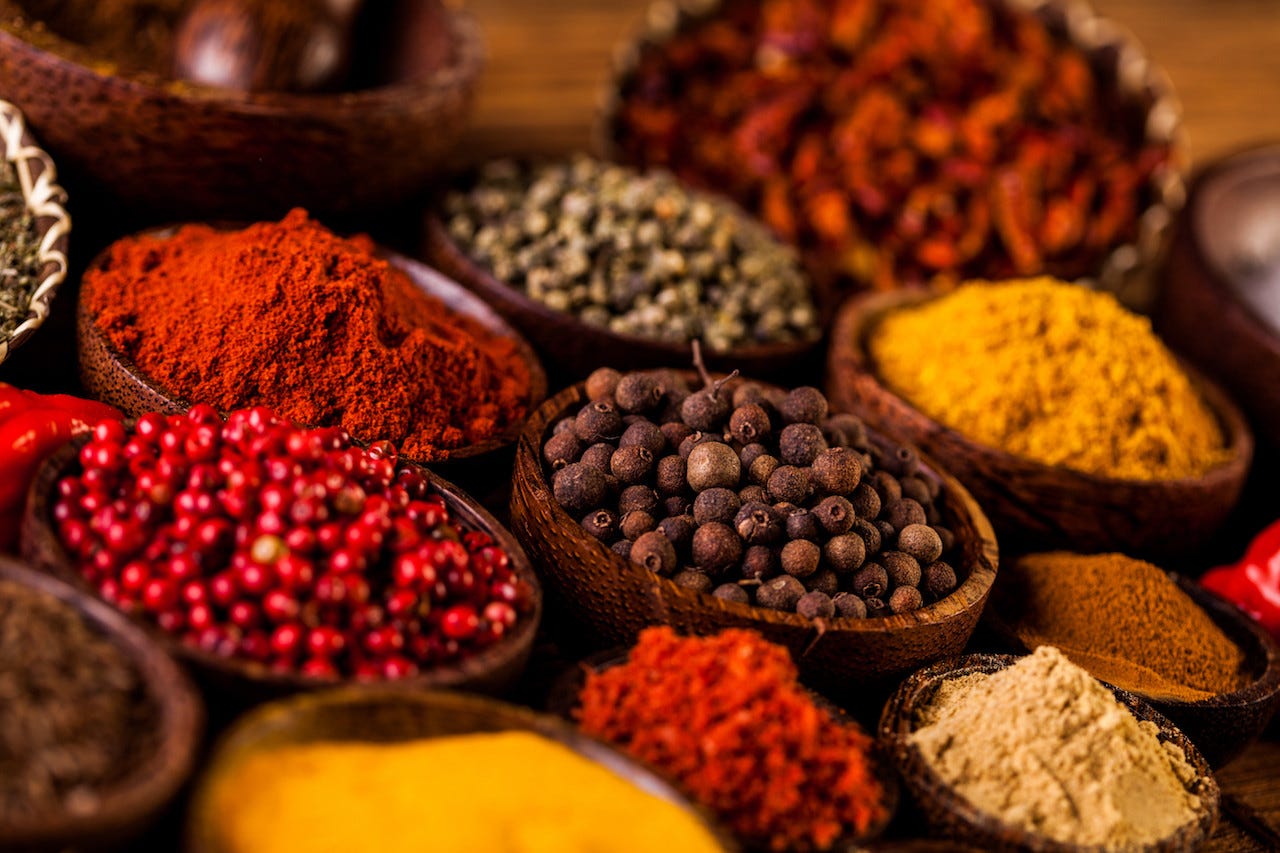
The Strait of Malacca’s storyline stretches back a long way.
Since before the 7th century, everything from ivory, richly decorated woven fabrics, fragrances and spices were being traded by traders from as far away as Africa, Persia, India, and Arabia.
Just imagine, everywhere the glint of precious goods. Distinctive smells. Exotic trappings of the crossroad of cultures.
The location gets its name from the Malacca Sultanate which came to power in 1400. This period coincided with the coming together of a Malay identity.
News of Malacca’s success as a trade centre spread quickly. This perked up the ears of none other than Ming Dynasty China herself, whence came famed celebrated voyager Zheng He on one of six visits to Malacca starting around 1405.
A Muslim himself, Admiral Zheng’s journeys became known as the Ming treasure voyages. China’s position then as a silk powerhouse was exhibited with gifts of astonishing quality.
In order to solidify the friendship between China and the Malays, legend says it was here he escorted the Chinese princess Hang Li Po to be wed to the Sultan of Malacca.
There is even a hill called Bukit Cina (literally Chinese Hill) where Admiral Zheng based his troops. A longstanding Chinese community still exists there.
Malacca developed a lucrative taxation system.
Merchants arriving from the west (India, Arabia, Persia) were taxed at 6%.
Merchants from the east (China, Ryukyu, Siam) were expected to offer gifts and sell 25% of their cargo at a discount (equivalent to 5% of their cargo’s value). Including gifts to local officials, this was roughly equivalent to the 6% taxes the merchants arriving from the west had to pay.2
There has always been an emphasis on face and gift-giving between Asians, it seems.
Within a short period of five decades, Malacca rose to become astonishingly rich.
Foreign interest spices things up
Meanwhile, halfway across the world, Europe was kicking up a stink. Literally, there was no way to keep food from spoiling easily. Pee-eew.
This meant Europeans were hungry for spices. It kept food from spoiling quickly, and masked the smell when it did spoil.
But spices were exorbitantly expensive. Let’s put things into perspective. In mediaeval England, a pound of cloves cost nearly five days’ wages, whilst a pound of saffron cost one month’s wages.
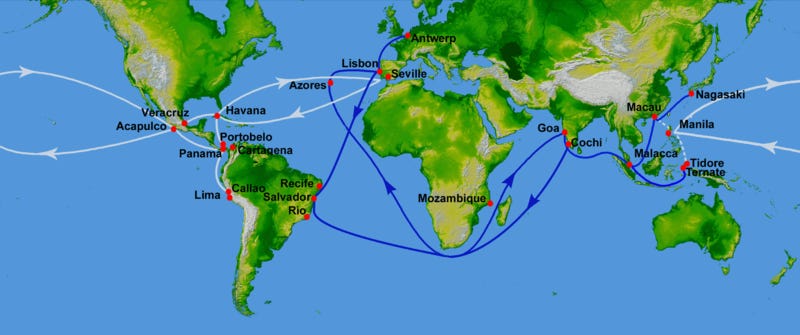
At the time, the spice trade was dominated by the Venetians who controlled a long and windy route through India and Arabia.
The key source of spice production: the Malay Archipelago.
Portugal, close to bankruptcy, was determined to put pay to this by way of imperial expansion.
So in 1511, after an attempt to resort to peaceful means by trading, Malacca was taken by the Portuguese in just over a month.
As incentivisation went, regular soldiers received up to 4,000 cruzados each, whilst captains received 20-30,000 each (for comparison 1,000 cruzados was about the annual income of a Count in Portugal)3.
The Portuguese had transformed Malacca into a formidable fortress, but they were surrounded by hostile Malay states such as the Aceh and Johor Sultanates.
Rather than dominating trade, Portuguese Malacca fragmented it along a number of ports along the Strait.
The Dutch were watching in nearby Aceh (today a province in Indonesia), waiting to exploit this discord. With the rise of the Dutch East Indies Company (VOC), the Dutch now had a mandate to disrupt Portuguese control.

By 1641, the Dutch, together with the Malays, had laid siege to Malacca, rooting out the Portuguese, and claiming Malacca as their own.
Dutch rule was long-lived. The alliances and pacts they made with the surrounding sultanates saw a long stretch of peace.
But the Dutch never intended to develop the city. They were more concerned about developing Batavia (today, Jakarta, the capital of Indonesia).
So Malacca itself continued to decline in importance.
Malacca then became part of the Straits Settlements in 1824 in a swap deal with the British Empire when Britain traded Bencoolen for it.
This tactic allowed the British to gain undisputed control over Singapore.
Once again, Malacca became an afterthought.
Today, Singapore is most well known as the gatekeeper of the Strait.
However, the Strait actually falls into the territorial waters of Malaysia and Indonesia.
They arguably shoulder a disproportionate amount of cost. Oftentimes it is a testy relationship between the three.
The weight of influence from the likes of the US, China, Japan and Europe is a collective recipe for geopolitical flashpoints.
If you wished to bypass the Malacca Strait, the only options are detours 👇
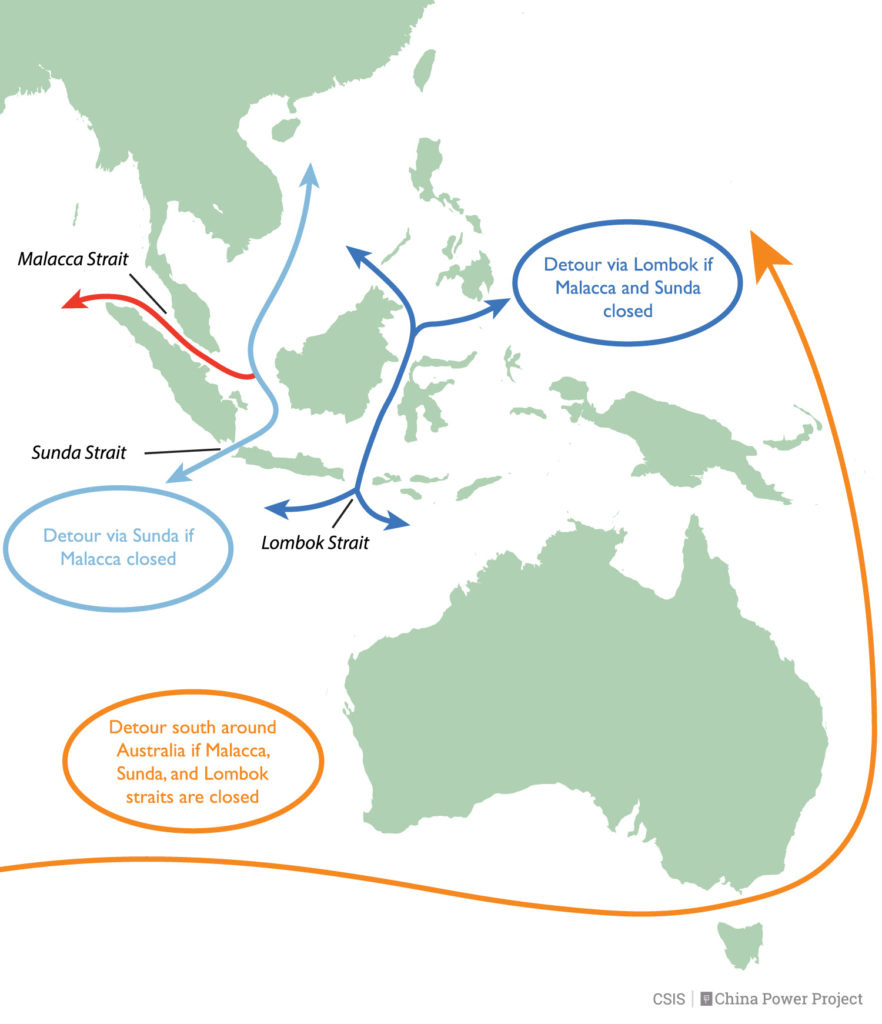
It is hard to exactly quantify the total costs of disruption to the Malacca Strait.
On the one hand, some say the impact on direct shipping costs might be manageable in the short run.
Over the longer term, global supply chain issues could occur.
Insurance surcharges/risk premiums, inventory holding/obsolescence costs, costs of waiting for subassembly to arrive. Reputationally, all businesses operating using the Malacca Strait would be hit.
Adding all these potential costs up, it’s possible these could be in the billions of USD.
It is all about trust in the efficiency and stability of the Malacca Straits system.
And an impossible number of ships continue route through it on a daily basis.
But just when there seemed no other choice other than the Strait, in comes an incredible proposal to circumvent it.
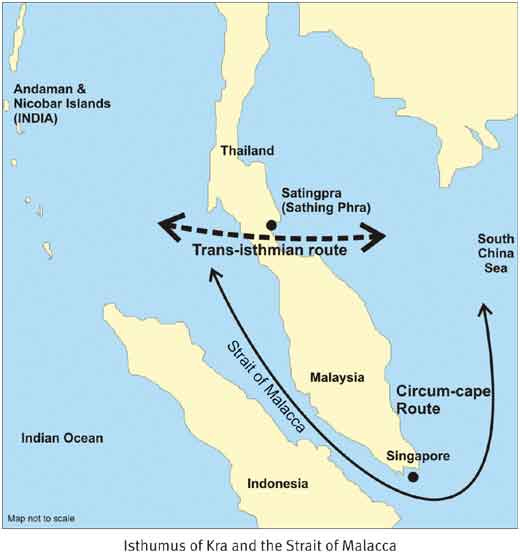
For decades, even centuries, a proposal for a canal cutting through Thailand at its narrowest point has been mooted.
The Thai Canal proposal would cut journeys down by 1,200km, saving 3-5 days of shipping time.
However, analysts suggest it could also upend regional stability.
One assessment suggests India would feel insecure by being encircled by more naval power.
Part of Singapore’s livelihood might evaporate.
China might be happy with a direct route through the Andaman Sea.
It’s a touchy subject.
In an era where many are looking towards the development potential of South East Asia, it is fair to say:
She who controls the Straits, controls the destiny of the world. Perhaps.
Today’s Malacca
Today, Malacca is more known for its bustling tourist trade, rather than its spice trade. During times like Christmas, at any hour of the day, the highways leading to the city are packed.
Throngs of tourists come up from Singapore.
I’m not sure if its Malacca’s colourful history that most attracts them. 84 dialects were once spoken here.
What I can be sure is they are drawn by its cultural legacy of food. And boy does Malacca pack a culinary punch.
My favourite was Heritage Flavours, just off the buzzing Jonker Street Night Market. It offers excellent Nyonya Cuisine.
The Nyonya people (also known as Straits-born Chinese) are a fusion in both the ethnic and cultural sense.
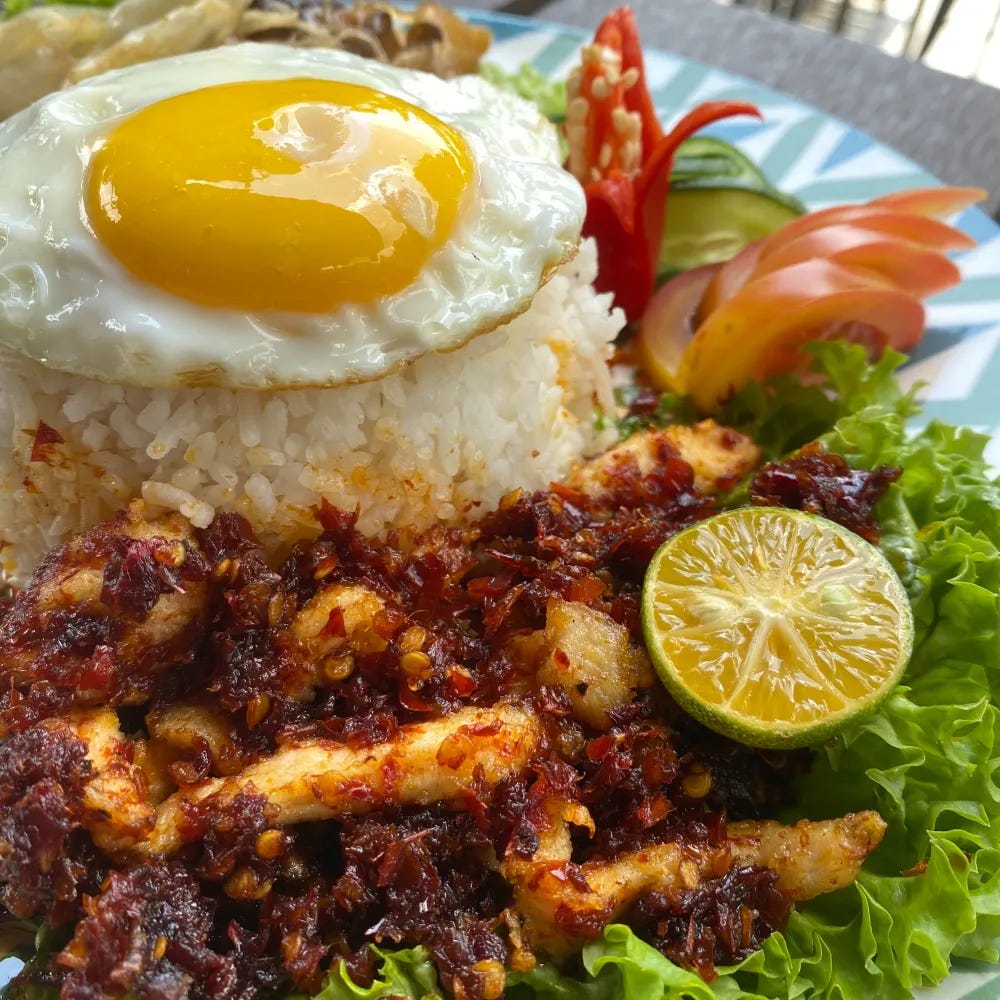
And what of the descendants of European settlers?
On Christmas Eve, many could be found singing their hearts out in their Creole language near the shoreline in the Portuguese Settlement.
Their elaborately decorated front porches decked with Christmas decorations.
They are a colourful Eurasian community. A reminder of the conquests of yore.
The oil of past and present
Whereas some would say semiconductors are becoming the oil of tomorrow. Spices were the oil of yesterday.
If this sounds confusing, I wouldn’t blame you. The course of history is confusing.
But perhaps the Malacca Strait is the method in the madness.
A reminder how when one controls both logistics and supply, you have a true chokehold on the value chain.
Amongst all this, Malacca leaves behind a rich, and often intangible, legacy in its culture and heritage.
So much more could be written about this charming, once bustling, swampy patch of coast.
Spare a thought for it. Come and see it for yourself.
Now for some quite irrelevant outtakes:
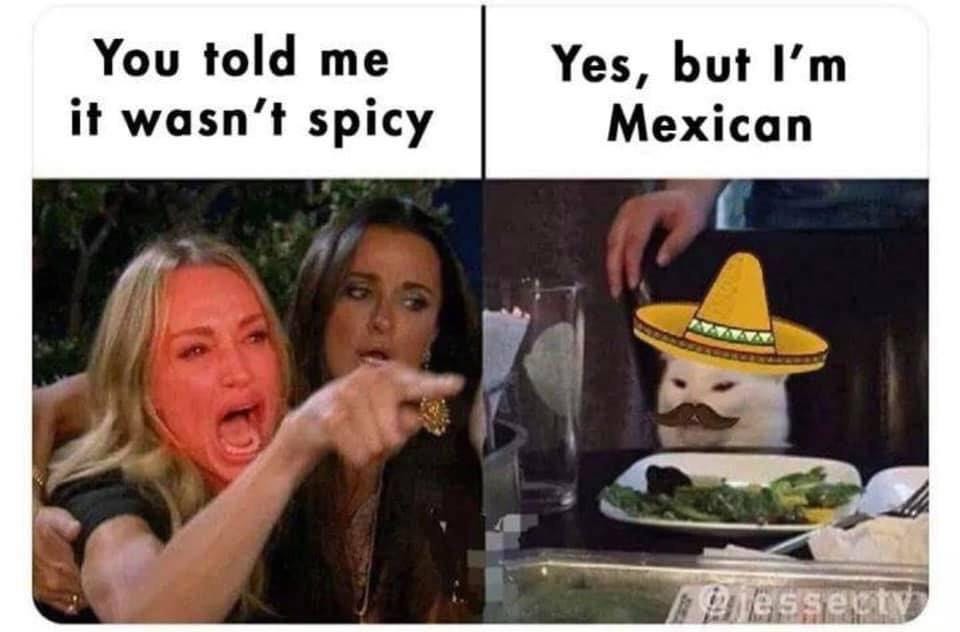
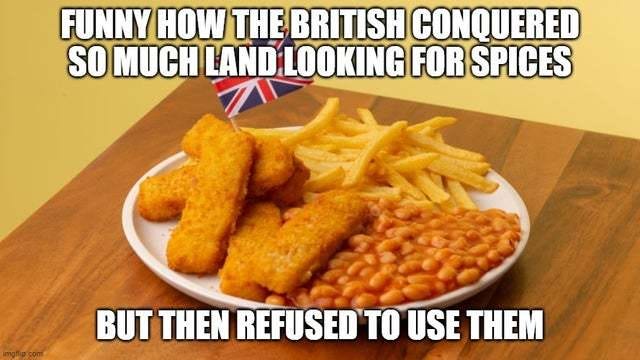
Was this article on the Significance of the Malacca Strait useful? Help us to improve!
With your feedback, we can improve the letter. Click on a link to vote:
Build your own? 👉 FeedLetter.co
All views contained in this article are my own and do not necessarily represent the views of any other organisation.
None of the above constitutes investment advice in any way.
Significance of Malacca Strait
https://www.theinsurer.com/viewpoint/dire-straits-for-flow-of-trade-through-malacca/
https://core.ac.uk/download/pdf/143891295.pdf
Riches of Malacca (see page page 273)
https://www.jstor.org/stable/10.1163/j.ctv2gjx041.15?seq=2#metadata_info_tab_contents
Gaspar Correia, Lendas da Índia Volume 2, p. 248
https://www.scribd.com/document/192928439/Lendas-da-India-por-Gaspar-Correia-vol-2#





